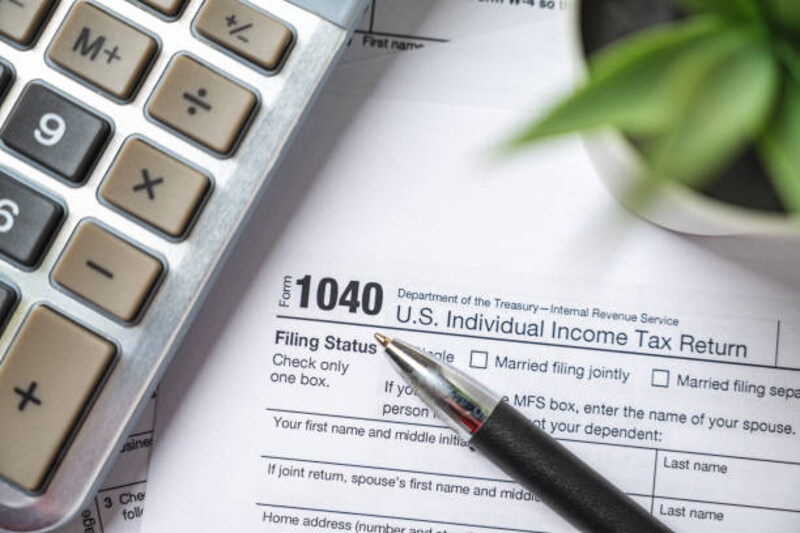If you’re like many American families, saving money is probably not your top priority. Despite the fact that having some savings on hand can help provide an extra layer of financial security and stability in times of need, most Americans simply cannot seem to take enough money from their paycheck each month to put away for the future. A quick glance at recent statistics paints a clear picture: only 8 out of 10 adults have some degree of savings set aside, while roughly 57% have less than $1,000 available—and 29% don’t have a single dollar saved up. If these numbers look troublingly familiar to you or someone you love, read on to find tips about how to start rebuilding your savings account balance today.
American savings rates and how they have changed over time:

The most recent statistics available show that the average American savings rate has dropped to 2.4%— a historic low comparing to the 6-7% rates seen in the 1970s and 1980s. This decrease in saving can likely be attributed to an increase in household debt, which includes credit card balances, student loans, and other forms of borrowing. Some experts believe that the rise in debt is due to an increase in easy access to consumer credit, as well as a shift towards more immediate gratification when it comes to purchases.
Saving tips for Americans who want to start rebuilding their savings today:
- Automate your savings: Setting up automatic transfers from your checking account into a dedicated savings account makes it much easier to save without having to think about it.
- Cut back on luxuries: Take a look at your spending and identify any areas where you can cut back—such as eating out, buying coffee, or expensive clothing items—to free up more money for savings.
- Make extra income: Consider taking on a side job or selling things you no longer need in order to increase your income and put more of it towards savings.
- Start investing: Investing is one of the best ways to grow your savings as it allows you to benefit from compounding interest over time. Consider opening an IRA or a 401(k) plan with your employer if you’re eligible.
- Track your progress: Monitor your savings and investments regularly to make sure you’re on track for achieving your financial goals. Setting aside some time each month to review will help ensure that you stay motivated and keep saving.
Increasing your savings can be a daunting task, but with dedication and discipline, it is certainly achievable. Taking small steps today can make a big difference in the long run. Before you know it, you’ll be well on your way to having a healthy savings account balance.
Breakdown of different age groups' savings habits:

Statistics show that younger Americans (under age 35) are more likely to have little or no savings, while older generations tend to have more. Millennials and Gen Zers report the lowest levels of savings, with 63% having less than $1,000 saved and 36% reporting no savings at all. By comparison, Baby Boomers and Gen Xers generally fare better, with 57% and 46%, respectively, having a minimum of $1,000 in savings.
The most successful savers are the Silent Generation (ages 73-90), who have saved an average of $66,560 over their lifetime according to one survey. This generation is noticeably more conservative when it comes to spending money, opting instead to save for a rainy day. They also tend to have fewer debt obligations and more disposable income overall.
Comparison of income levels and savings, including the impact of taxes on savings:
Savings rates obviously differ drastically depending on income level. Households in the top 20% of earners had an average savings rate of 8.6%, compared to 0.4% for the bottom 20%. This is largely due to the fact that higher earners tend to have more disposable income and can therefore save a larger portion of their paycheck each month.
Taxes also have a considerable impact on savings. Individuals in higher tax brackets are more likely to see a larger portion of their income go towards taxes, leaving less to save or invest. Low- and middle-income households can benefit from taking advantage of tax breaks such as the Earned Income Tax Credit or retirement account deductions in order to maximize their savings potential.
Analysis of Americans' spending habits and how it impacts their ability to save money:
It goes without saying that Americans’ spending habits have a direct impact on their ability to save money. Unfortunately, in today’s consumer-driven society, it can be all too easy to spend more than we should. From meals out to online shopping, many of us are guilty of overspending on things we don't really need. That is why it is important to track your spending and create a budget that will help you stay on track and put money aside for savings.
Another factor that influences Americans’ ability to save money are the rising costs of living, which can make saving more difficult for those who have less disposable income. The cost of housing, health care, transportation, and other necessities has been steadily increasing in recent years, making it harder for individuals to set aside money for the future.
Strategies for improving personal savings rates by cutting out unnecessary expenses and reallocating funds for savings:
The best way to improve personal savings rates is to identify and cut out unnecessary expenses. This could mean reviewing your monthly bills for services that you don’t use or need, such as subscription boxes or streaming services. Taking a close look at your budget and seeing where you can make adjustments can help free up funds for savings.
It may also be helpful to create a spending plan that allocates funds towards necessary expenses, savings, and other goals. This can help ensure you stay on track with your saving goals and don’t overspend on impulse purchases.
Lastly, consider taking advantage of apps or websites that offer ways to save money automatically. By setting up automatic transfers from your checking account into a savings account, you can build up your savings without having to think about it. This is an easy way to start building a cushion for the future.
Conclusion:
Saving money and increasing personal savings rates may seem like daunting tasks, but with self-discipline and dedication, they are achievable goals. By cutting back on unnecessary spending, creating a realistic budget, and taking advantage of automatic savings tools, you can set yourself up for financial success. Keep track of your progress and remember that even small steps today can make a big difference in the long run.
FAQs:
Q: What is the best way to save money?
A: The best way to save money is to create a budget and track your spending. This will help you identify areas where you can cut back on expenses and free up funds for savings. Additionally, setting up automatic transfers into a separate savings account can be a great way to grow your savings without having to think about it.
Q: How much should I be saving each month?
A: This depends on your individual financial goals and circumstances. Experts generally recommend aiming for 15% of your income as a good starting point, but you should adjust this based on your own needs. If you’re just getting started with savings, even setting aside a small portion of your income can make a big difference over time.

Everything You Need to Know About Do-It-Yourself (DIY) Investing?

How to Make Money Using TikTok Shop: A Beginner's Guide

The Role of Retained Earnings in Financial Statements

How to Avoid Paying Taxes Double on Your Mutual Fund Investments

All About Bond Rating Agencies

Average American Savings

Best Midcap ETFs

Everything you need to know about APR

What Is Form 6251: Alternative Minimum Tax-Individuals?

For What Length of Time Can a Boat Be Financed?

Ways to Refresh Your Budget for the New Year
